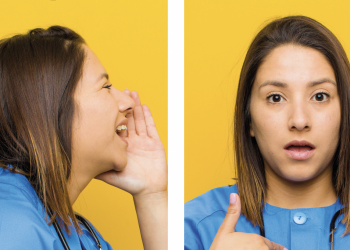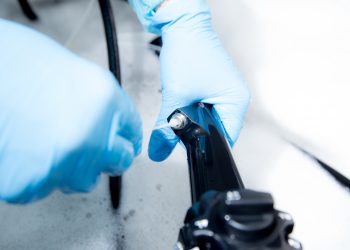For America’s 4.3 million registered nurses, financial advice that caters to traditional workers often falls short. Personal finance recommendations are typically designed for individuals with 9-to-5 jobs, stable income streams and predictable expenses. Yet the realities of nursing—a profession sometimes defined by irregular schedules and fluctuating income—require a completely different approach.
The widespread lack of financial education among nurses and the broader population compounds the issue. Bridging this gap requires understanding the profession’s unique demands and tailored financial strategies to meet these challenges.
The 12-Hour Reality Check
Mainstream financial advice often focuses on cutting costs in areas like coffee-shop runs or eating out, with suggestions like “skip the latte” or “pack your lunch.” However, such advice rarely accounts for the taxing demands of a 12-hour nursing shift, particularly in critical care or emergency units.
For nurses working through the night in high-stress environments, a $7 hospital cafeteria coffee is not a luxury, but a necessity. This “survival fuel” keeps them alert and functioning during grueling hours. Even packing meals isn’t as simple as it sounds. Refrigerators in hospital break rooms are often overcrowded, poorly maintained or outright hazardous.
These realities make generic financial tips impractical and underscore the need for advice that is appropriate for the unpredictable nature of nursing schedules and working conditions.
Irregular Income, Irregular Solutions
Budgeting on a consistent income is the cornerstone of most financial-planning advice. However, for many nurses, paychecks fluctuate from month to month due to overtime shifts, float assignments and bonuses. In 2024, base salaries for registered nurses ranged from $77,600 to $120,000 or more annually, depending on location, specialty and experience. However, this is just the starting point. Many nurses supplement their income significantly through the following:
- Shift differentials: Night shifts often pay an additional 10% to 20% more.
- Weekend premiums: These can add $3 to $5 per hour.
- Critical staffing bonuses: Hospitals sometimes offer $100 to $500 per shift during staffing shortages.
- Overtime pay: Time-and-a-half or even double-time pay for hours worked beyond the standard schedule.
- These variable income streams, while lucrative, make traditional budgeting strategies insufficient and unsustainable. Relying on working overtime consistently can result in burnout and the likelihood of making workplace mistakes. Nurses need tools and techniques that account for irregular earnings and prioritize financial stability.
The Hidden Costs of Caring
Nurses face a range of professional expenses that are often overlooked in traditional financial planning:
- Licensing fees: Annual renewals range from $50 to $150 depending on the state.
- Continuing education requirements: Keeping up with certifications and licensure costs $500 to $1,000 annually.
- Footwear: Nurses on their feet for 12-hour shifts require comfortable shoes, costing $120 to $200 per pair. Given the job’s physical demands, these shoes often need replacing every three to six months.
- Uniforms: Scrubs and other workwear typically cost more than $500 annually (Burns, 2024).
- Liability insurance: This critical safety net costs $100 to $500 annually.
These recurring expenses quickly add up, creating a financial strain that generic advice often fails to address.
Investment Challenges for Night Shift Nurses
One of the less obvious financial challenges nurses face is the misalignment between their schedules and the financial markets. The stock market operates during traditional business hours, making it difficult for night shift workers—approximately 30% of the nursing workforce—to manage investments actively.
Beyond timing, the larger issue lies in the lack of financial education about investing. Many nurses graduate without understanding basic concepts like compound interest, diversification or portfolio management. This knowledge gap can delay or even prevent nurses from building long-term wealth. Automated investment tools, such as robo-advisors, can help bridge this gap by providing simple, user-friendly platforms for investing without requiring constant oversight.
The Burden of Student Loans
Nurses often enter the workforce carrying significant student-loan debt. While aggressive repayment strategies are commonly advised, nurses have access to unique repayment options that require careful consideration:
- Public service loan forgiveness (PSLF): Many nurses qualify, but the program’s requirements are complex and subject to legislative changes.
- Health Resources & Services Administration (HRSA) Programs: These offer repayment assistance for nurses working in underserved areas.
- State-specific forgiveness programs: Many states incentivize nurses with loan forgiveness in exchange for service in critical-need areas.
- Employer-based loan repayment: Some hospitals and healthcare organizations provide direct loan repayment as part of their benefits package.
- Income-driven repayment plans: These plans adjust monthly payments based on earnings, accommodating the overtime and bonuses that nurses frequently receive.
Navigating these options requires a thorough understanding of the programs’ terms and how they fit into a nurse’s broader financial goals.
Retirement Planning in Nursing
Retirement planning presents unique challenges for nurses, particularly in physically demanding specialties. A TIAA Institute study found that 33% of healthcare workers feel unprepared for retirement, and nurses are no exception.
Key factors include:
- Earlier retirement: Many nurses aim to retire early due to their work’s physical and emotional toll. Some may choose gradual retirement by reducing their hours. This decision also impacts financial planning.
- Workplace injuries: Nurses experience 8.8 workplace injuries per 100 full-time employees, which can disrupt retirement savings plans.
- Decline of pension plans: While some public hospitals do still offer pensions, these benefits are becoming increasingly rare.
- Disability insurance: Comprehensive coverage is essential for nurses, given their higher risk of injury. Approximately half of workplace injuries among nurses result from routine tasks such as lifting patients, bending or reaching. Disability insurance for nurses typically covers about 60% to 80% of their income. The cost of this insurance generally ranges from 1% to 3% of a nurse’s annual salary.
Retirement planning requires a proactive approach, including maximizing employer-matched contributions, exploring tax-advantaged accounts and considering alternative income streams.
Creating a Budget for Irregular Income
Nurses with fluctuating pay need budgeting strategies that prioritize stability and flexibility.
- Base budget: Build a budget around base salary or guaranteed income.
- Shift differential fund: Set aside income from overtime and bonuses into a separate account for irregular expenses or savings goals.
- Emergency fund: Maintain six to nine months’ worth of living expenses to cover potential injuries, job changes or unexpected life events.
Investing With a Busy Schedule
For nurses balancing demanding work schedules, passive and automated investment strategies are often the best option.
- Robo-advisors: Several platforms offer automated portfolio management tailored to individual risk tolerance.
- Employer retirement plans: Nurses should maximize contributions to employer-sponsored 401(k) or 403(b) plans, especially if their employer offers matching contributions.
- Target-date funds: These funds automatically adjust risk levels based on the expected retirement date, offering a hands-off approach to investing.
Tax Planning
Nurses often overlook potential tax savings, leaving money on the table. A CPA or tax professional can help navigate these challenges.
- Deductible expenses: Track expenses like uniforms, liability insurance and continuing education for potential deductions.
- Overtime tax implications: Be mindful of how overtime and bonuses can push you into a higher tax bracket, and plan accordingly.
- Travel nurse taxes: If working across multiple states, plan for additional tax filings and understand state-specific obligations.
Student Loan Optimization
To manage student-loan debt effectively, nurses should:
- Stay informed about updates to programs.
- Leverage any available employer-based loan repayment assistance programs.
- Regularly reassess repayment plans to align with income changes and career goals.
The Future of Financial Planning for Nurses
Nurses’ financial challenges will become even more complex as the healthcare industry evolves. The rise of travel nursing, increasing specialization and changes in compensation models require a shift away from cookie-cutter financial advice. Tailored financial planning for nurses can include:
- Specialized advisors: Seek financial advisors who are experienced in working with healthcare professionals.
- Nursing-specific groups: Join forums or organizations focused on financial literacy for nurses.
- Holistic job evaluations: Consider the complete benefits package when evaluating job offers, not just the base salary.
Financial literacy is critical for nurses to build wealth and achieve financial independence. Educational initiatives, such as employer-sponsored programs, online courses or professional organizations, can equip nurses with the knowledge they need to make informed decisions.
Protect Your Financial Health
For nurses, financial health is as essential as physical and emotional well-being, yet it often receives less attention than it deserves. The demanding nature of the healthcare profession can lead to financial stress, which can in turn impact overall job performance and personal satisfaction. Addressing the unique challenges faced by nurses requires a shift toward specialized advice and proactive financial planning that considers their specific circumstances and goals.
Nurses frequently encounter a myriad of financial pressures, including student-loan debt, unpredictable work hours, and the need to plan for retirement at a time when healthcare costs are continually rising. Emphasizing the importance of tailored financial strategies is crucial for helping nurses navigate these challenges effectively. For instance, developing a clear budget that accounts for irregular income patterns can be vital in managing living expenses and savings goals.
Furthermore, understanding the various benefits available to nurses, such as loan forgiveness programs and retirement accounts tailored for healthcare professionals, can significantly enhance their financial stability. By utilizing these resources, nurses can bolster their financial wellness and set themselves up for long-term success.
Embracing proactive financial planning also allows nurses to alleviate stress and concentrate on what they do best— providing exceptional patient care. When equipped with the right tools and knowledge, nurses can make informed decisions about investments, savings and debt management. This not only enhances their financial future but also contributes to their overall well-being and professional fulfillment.
Prioritizing financial health empowers nurses to pursue their careers with confidence and peace of mind. By embracing personalized financial strategies, they can create a solid foundation for their futures, ultimately leading to improved job performance and a higher quality of life inside and outside the workplace. The journey toward financial well-being is an empowering process that fosters resilience and enables nurses to thrive in their vital roles within the healthcare system.
Author
-

Pamela is a registered nurse who is passionate about promoting holistic financial wellness among healthcare professionals. Drawing from personal experience and professional insights, she aims to bridge the gap between traditional financial advice and the unique challenges faced by those in the nursing profession.
View all posts



























